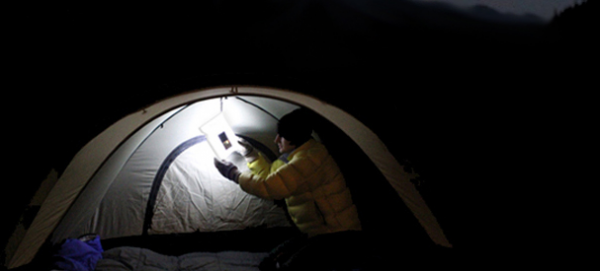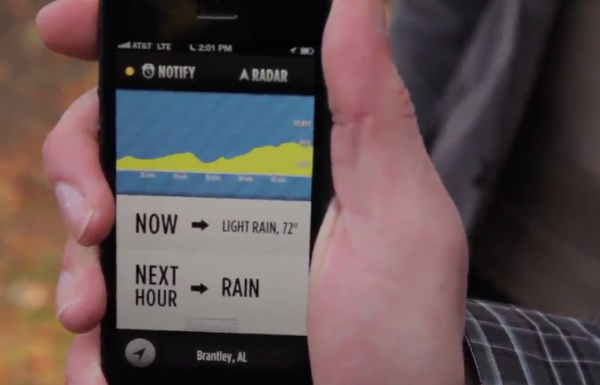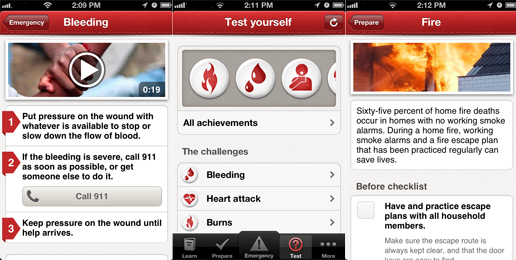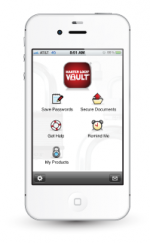September is National Preparedness Month, and on my blog we’ll be taking a look at all the different ways you can leverage tech to stay safe and protect yourself and your family. One thing you should always be prepared for is severe weather, especially if you live somewhere that’s prone to regular flooding, hurricanes, earthquakes or tornados. However, even if your location isn’t disaster prone, there are steps you should take to be prepared in case of any kind of emergency!
While there’s plenty of tech you should already have available just in case (things like hand-crank operated radios, extra batteries, duct tape), today I’m going to take a look at a few great pieces of tech you probably haven’t thought of but will definitely come in handy should the big storm hit your home this year.
With the free version of Master Lock Vault, you can store all of your passwords and Master Lock combinations, as well as your all of your most sensitive and important documents, photographs and other files all in one place. You even get up to 1 gigabyte of space to store your files for free, no questions asked. At the last minute before the big one hits, you should be sure you take a moment and upload all of your most important files in case your computer (or backups) are lost in the storm.

I love these devices—they’re basically inflatable plastic bags with rechargeable batteries and lights inside. They’re awesome for a bunch of reasons. One is that, because they’re in the inflatable bag, they’ll stay safe and continue to provide light even in flood conditions. Another is that they’re solar powered so you’ll be able to charge them every day and reuse them every night. Don’t just get one, grab a few so that you’re ready for anything. These things are great even if you’re not in a severe weather area but simply living where your lights go out often and you’re looking for a quick fix.

Smartphones and tablet computers can be lifesavers in an emergency, connecting you to friends, family and emergency workers as well as a wealth of information available online and through the apps I mention below. But if you don’t have a backup battery solution available for your devices, they’ll be useless paperweights in the event of an emergency. I love MyCharge Hub batteries because they include the most important connectors you’ll need (micro-USB and Lightning) as well as a USB port to let you connect a third device at the same time. Different models have different battery sizes (3000, 6000, and 9000 mAh respectively) so for emergency backup purposes, be sure to get the largest one you can afford. If you’ve got an older iPhone or iPad and don’t want or need the lightning connector, then the last-gen Peak 6000 charger with 30-pin adapter may suit your needs even better at a lower price than the latest models.
The Best Apps

Severe Weather Alerts
Your phone is probably set up to automatically receive Wireless Emergency Alerts (WEA) from the National Oceanic and Atmospheric Administration (NOAA), but double check to make sure. On your iPhone go into Settings->Notifications and scroll to the bottom. Make sure “Emergency Alerts” are turned on. On Android, go to Settings->Emergency Alerts and be sure they’re turned on. This way you’ll always receive the absolute latest data and warnings straight from the NOAA no matter where you are.

On iPhone, no app is better at predicting rain or snow conditions than Dark Sky, which uses a new kind of weather forecasting algorithm to make down-to-the-minute predictions about upcoming weather. It also includes amazing radar animations that can help you figure out if the next big storm is headed your way.

First Aid by American Red Cross App
If you haven’t upped your first aid certification lately, or are unsure what to do during a variety of emergency conditions, this app could be a lifesaver. With a dedicated button with advice on how to deal with a variety of emergencies—not just your standard first aid stuff but even how to deal with injuries like burns, allergy attacks, seizures and meningitis. The Red Cross also produces several apps with more specific information about what to do in case of tornados, hurricanes, earthquakes or wildfires, so if you live in a part of the world prone to a particular type of severe weather, be sure to grab those apps as well.
Disclosure of Material Connection: Hey readers, this is a “sponsored post.” The company who sponsored it compensated me via a cash payment, gift, or something else of value to write it. Regardless, I only recommend products or services I use personally and believe will be good for my readers.
